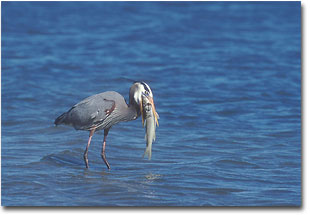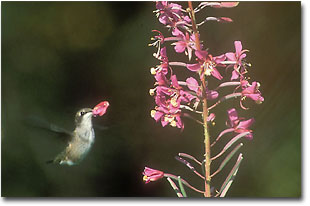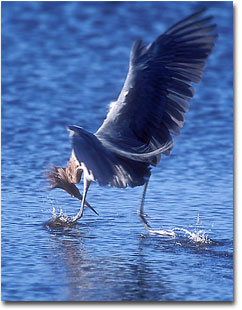The photography of wild birds is a whole lot easier than the photography of wild mammals. Show of hands: Who agrees with that statement?
 Before you answer, consider some facts.
Before you answer, consider some facts.
On average, researchers list at least 10,000 bird species worldwide today. Contrast that number with the more precise count of 4629 mammal species currently recognized. That provides the bird photographer with more than a two to one advantage just in the number of species to photograph.
But the bird photographer’s odds show up even better than that when you consider that of the 4,000 plus mammals worldwide, half of them rodents. You know – rats and mice and some squirrels. While all serious wildlife photographers will photograph anything with a pulse, when was the last time that you saw a post of other than a squirrel from the vast rodent family at NPN?
Next consider that bats comprise another 1,000 of the world’s mammal species. How many times have you gathered your gear, bought your film, planned your trip and headed off to the wilds to target bats?
That’s not to say that some folks don’t work with these less glamorous species. In fact, I’d bet money that anyone who wanted to carve a niche for themselves and who worked at getting a file of rodents and bats would soon find their work in demand by a number of photo editors worldwide.
But to get good images of any species, you really ought to like them first. And that’s absolutely true for any species. Read the words of Artie Morris or NPN’s Greg Downing and others who do truly great bird photography and you’ll find that their inspiration to photograph birds came from their love of these feathered creatures.
 That love of birds also encouraged them to learn about birds. The more you know about a species, the better you will photograph it.
That love of birds also encouraged them to learn about birds. The more you know about a species, the better you will photograph it.
Show of hands again: who out there loves rats? How about bats? Okay. So now we’re down to about 1,000 total species of mammals worldwide that most folks would even consider photographing against 10,000 birds. That’s a 10 to 1 advantage for the bird photographer.
Next, add to the equation that birds exist everywhere. Everyone has some colorful birds right in their own backyard. The availability of bird subjects alone has to make it easier to photograph them. I mean, how many of you have elk in their neighborhood? How about moose?
It’s a lot harder for most of us to find any mammal to photograph that will as willingly stand and pose as some of the great blue herons of Florida. You can probably almost get close enough to some of them to strangle with your bare hands! Or a “popcorn” duck anywhere – you know, the mallards and other species that folks throw popcorn to at parks and suburban lakes and such. How hard is it to photograph any of these birds?
And while some birds might present a hazard, rutting moose can be downright dangerous to your health. And Hell hath no fury like a mad mother moose. Then there’s angry bison, enraged elephants, surprised grizzlies, and any hippo – you get the picture.
 But the pictures of birds that go beyond the sitting ducks – ahhh. Now we’re talking a different beast altogether – pun intended.
But the pictures of birds that go beyond the sitting ducks – ahhh. Now we’re talking a different beast altogether – pun intended.
Sometimes those images happen by pure accident. Two of my favorite bird images have happened by accident: the great blue in Texas trying to swallow a rather large fish (it did!) and the ruby throated hummingbird in the Maine Woods that got caught in a different predicament both fit the words of Don Imus: “You can’t make this up.”
The image of the reddish egret looking back between its legs I owe to simply being there with good autofocus. It’s an image that I planned to catch. But it’s no sitting duck. Not that there’s anything wrong with sitting duck images. I’ve got lots of those too. But we should all strive to go beyond the sitting ducks, shouldn’t we?
And so in thinking about this month’s column, I wanted to highlight the work of other photographers who obviously planned their images with the final picture in mind. And so I perused the images recently posted on NPN Forums.
While I could have picked a bunch of them, I settled on three bird images that for this camera hunter go past the easy stuff. I asked permission to reference them here, and Jim agreed to leave them on the server as examples of the kind of work people who post at these Forums are doing. The artistic composition with the “echo” of the out of focus cedar waxwing of Garth McElroy, the near perfect flying Canada goose caught after many tries by Chip Estabrooks and the stunning Costa’s hummingbird family captured by Charles W. Melton all inspire me. How about you?
And then there’s the different type of mammal photograph, as exampled by the grizzly standing amid blurred waters posted by Carl Donohue. No sitting duck either, is it?
Images such as these all make me want to grab a camera, get out there and get some better stuff myself. Even if there’s no moose standing under that tweetie bird.
Catch yours in the good light.
BS-NPN 012
http://camerahunter.com
Comments on Bill Silliker, Jr.'s The Camera Hunter articles? Send them to the editor.
Maine wildlife & nature photographer Bill Silliker, Jr. – The Mooseman - photographed at many wild places in North America, with the results published in magazines internationally and in 9 of his own books. Bill was an instructor of wildlife and nature photography for L. L. Bean's Outdoor Discovery Program and a member of the Fuji Film Talent Team. Read more about Bill on the Camera Hunter archives page.



